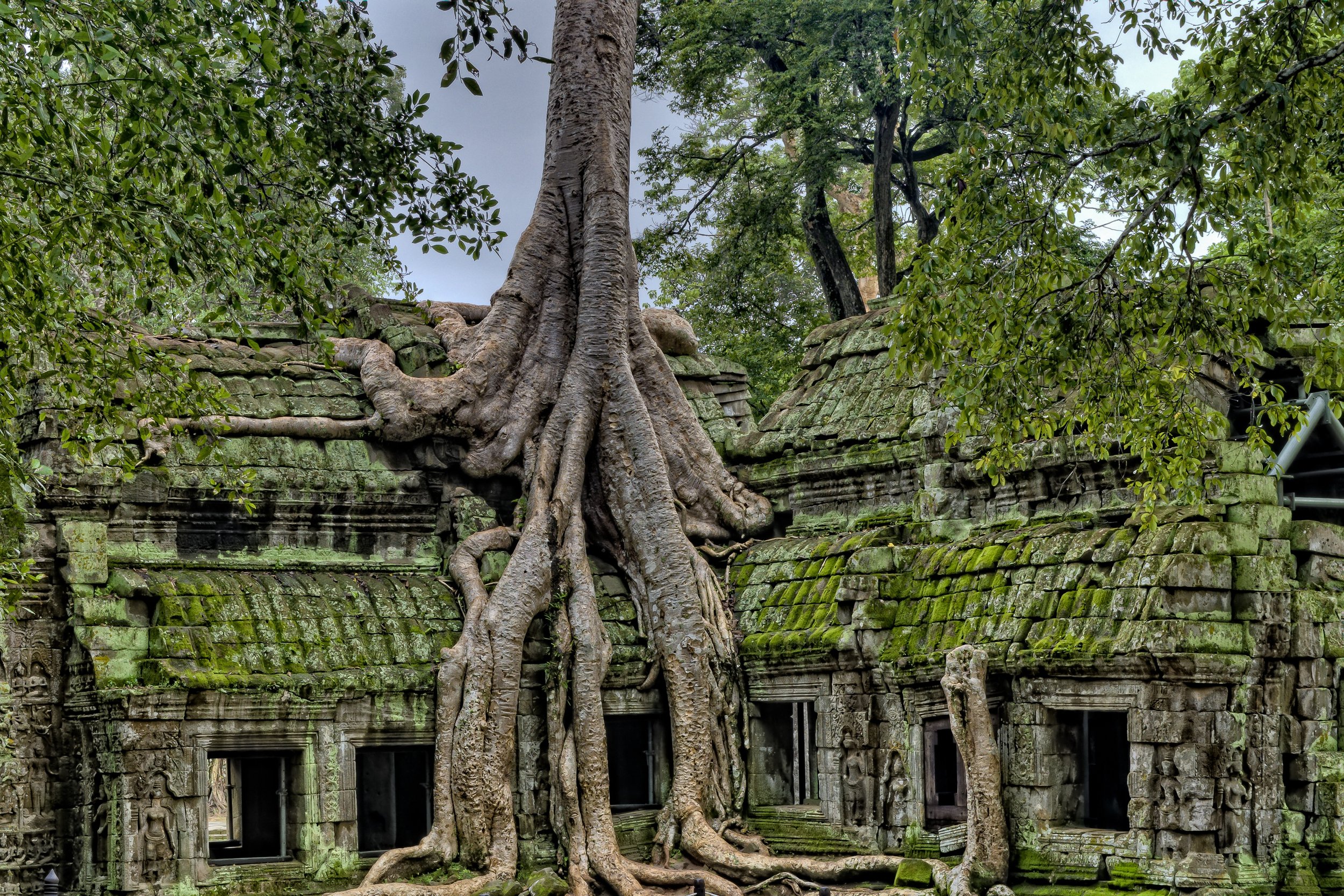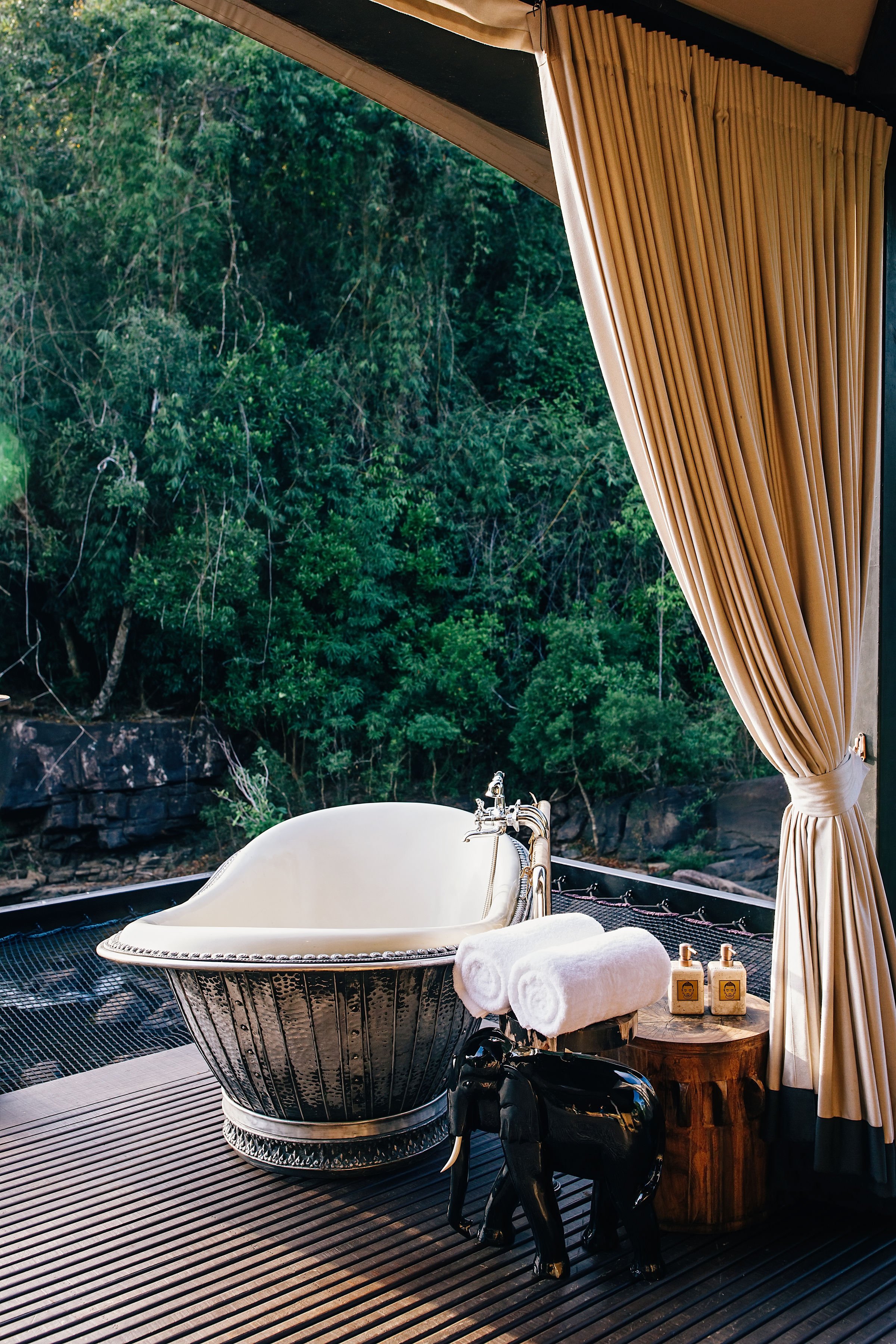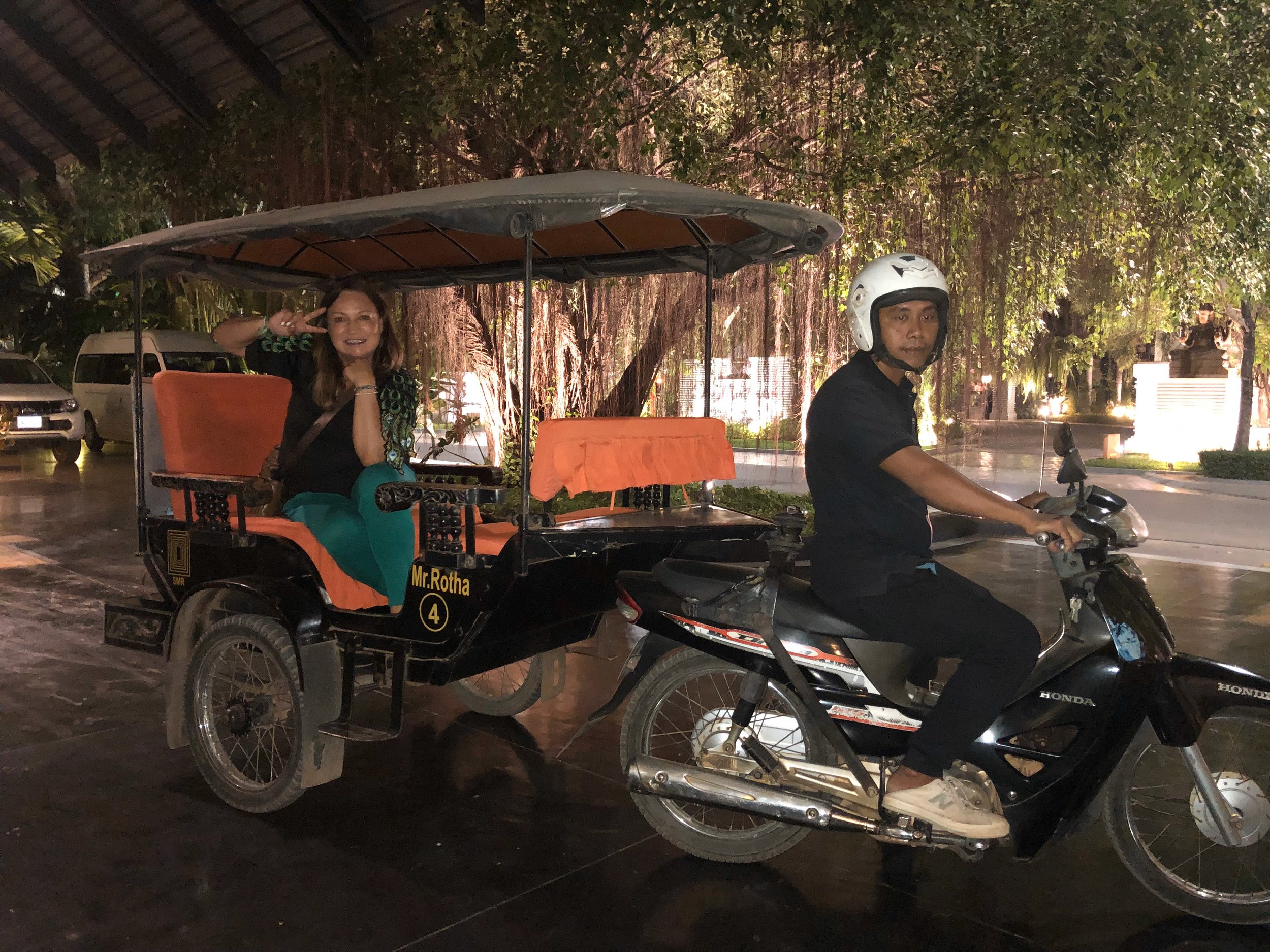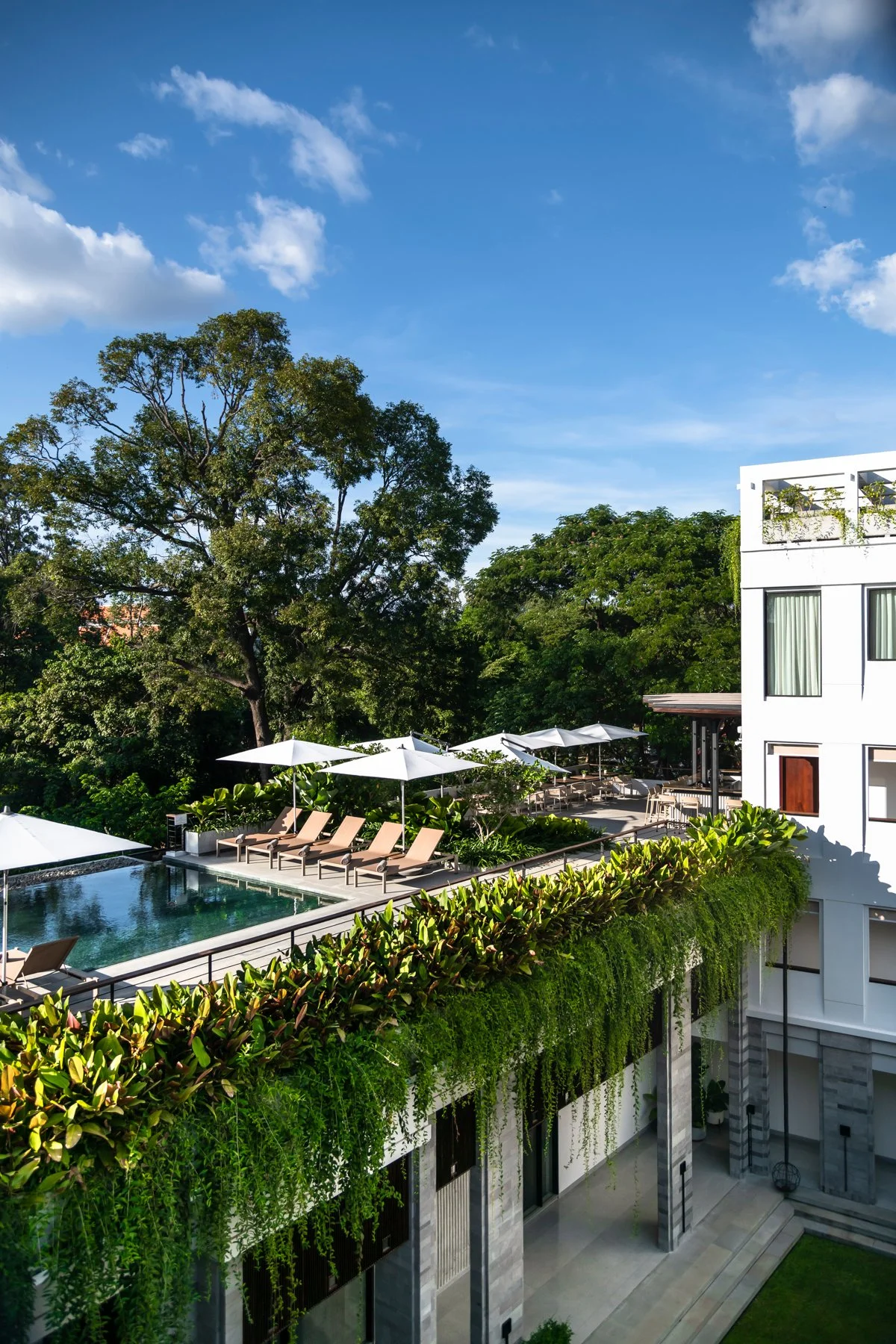The Wonders Cambodia
From the magnificent temples of Angkor Wat to the wilderness of the rainforest and on to the regal splendour of Phnom Penh, Norah Casey discovers the magic of Cambodia.
After 25 years of travel writing I’ve come to appreciate the many facets that make a country beautiful. If asked, what’s the one place you would recommend visiting I always say Cambodia. My first visit was back in 2010 and I was mesmerised by the people, so welcoming and gracious after everything they have endured. The temples are stunning, from the magnificent world wonder that is Angkor Wat to the Angelina Jolie famed Tomb Raider temple where nature and ancient stone intertwine to create something uniquely beautiful.
This time I went back to Angkor Wat, staying at Siem Reap, the gateway to these magnificent temples, but we also ventured further afield, kayaking through the water villages on Asia’s largest lake and travelling deep into the rainforest of Cambodia.
There, an exhilarating zip line across the tree canopy ends in an eco-elegant, art infused tented camp perched on the side of thundering waterfalls. We spent our final days following in the footsteps of Jackie Kennedy in the regal splendour of Raffles in Phnom Penh sipping tea in the classy Elephant Bar with the Royal Princess Sita Norodom, the niece of the current King Of Cambodia. It was quite the trip.
There are many things I love about Cambodia but the people are what won me over when I first visited, so proud of their Khmer heritage and culture. Art and craftsmanship is ever present and central to Cambodian life. And the food is quite unlike anywhere else in Asia with strong French influences and an emphasis on fresh vegetables and fruit. The lotus flower, which has special significance in Cambodia is everywhere, huge lakes and fields of these beautiful exotic flowers scent the air.
Cambodian people smile readily, pressing their palms together like a lotus flower to perform the traditional Sampeah greeting.
Our first stop was Siem Reap, a town in north-western Cambodia, and the gateway to the magnificent remains of the Khmer civilization. Siem Reap was hardly recognizable from my last visit nine years ago. Like most other Cambodian towns and cities, the people of Siem Reap fled from the brutal Khmer Rouge to the countryside in 1975. Since Pol Pot's death in 1998, the tourism industry revitalised slowly but with a huge surge over the past decade.
The old colonial buildings, shopping and commercial districts are still at the heart of the town centre around Sivutha Street and the Psar Chas area (the Old Market area) but there’s a distinct hipster vibe to a new generation of hotels, guesthouses, craft shops and restaurants around the Wat Bo and Psar Leu areas. So now there are more reasons to stay longer in Siem Reap.
WHAT TO SEE
Cambodia is home to over 4,000 temples but the most revered are on the doorstep of Siem Reap. Angkor Wat is the largest religious monument in the world and considered to be one of the seven wonders.
But it was almost lost to future generations through neglect. In 1992 it became a World Heritage Site. At the time illegal excavations, pillaging and even land mines threatened to destroy the site and it was added to the List of World Heritage in Danger sites. Restored and protected by UNESCO this incredible temple complex was moved off the danger list in 2004. My guide for the day was Lors, born in a small village North of Siem Reap and knowledgeable about all manner of details about the Angkor Archaeological Park (book through indochineex.com).
Angkor Wat Temple
The most significant and world famous temple in the park is Angkor Wat which the entire site is named for. The distinctive ancient stone façade appears on the nation’s flag which makes it the busiest of all the temples. Teams of elephants and men built Angkor Wat in the 12th century for King Suryavarman II as a spiritual home for the Hindu god Vishnu. The Khmer Empire at that time incorporated Myanmar and Vietnam and Angkor and covered 1000 square kilometers. If you are short on time then Angkor Wat is top of the list, this magnificent temple is a treasure trove of art and incredible intricate wall carvings depicting Hindu legends. Lors knew them all, stopping for some time to recount the famous battle between the gods and the demons in search of ‘amrita’ the ambrosia of life and immortality.
The ‘Tomb Raider’ Temple
The jungle had all but subsumed the beautiful temple of Ta Prohm when French archaeologists rediscovered Angkor Wat in the 20th century. During the restoration work of this ancient Buddhist monastery the precarious co-dependency of the giant strangler fig tree roots and the loosened stones was maintained. The two survive in tandem creating such a unique vista that it became world famous because of its appearance in the movie Lara Croft: Tomb Raider. But the lichen covered Ta Prohm is one of the most spiritual and atmospheric temples and a testament to how precarious and precious these ancient ruins are.
If time allows then the third of the ‘big three’ is the Bayon Temple, Angkor Thom with its giant face carvings.
WHAT TO DO
Theam’s House: Set amongst tropical gardens, Theam’s House is the home of Cambodian artist and designer Lim Muy Theam where his private collection and beautiful art, sculpture and lacquer work are created on site. Having spent decades reviving the Cambodian art scene Theam now trains a team of protégé artisans’ apprentices.
The Floating Villages
A real highlight of our stay was a boat trip on the Tonlé Sap Lake, the largest freshwater lake in Southeast Asia with one of the world’s most vibrant ecosystems. Even better, we had adventurer and conservationist Nick Butler as our guide.
We set off on board the FinFoot and before long we were kayaking in the tranquil waters gliding through the floating villages and flooded forests, while keeping a watchful eye for the many rare birds that thrive in this incredible vast inland sea. The ebb and flow of the Tonle Sap means the villagers have to move homes, shops and schools depending on the water level. As the sun set and the fishermen headed home we toasted the quiet splendor of the lake, a million light years away from the bustle of Siem Reap. indochineex.com.
Phare: This Cambodian Circus, one of multiple projects run by the Phare Ponleu Selpak Academy (phareps.org), was inspired in the refugee camps in Battambang after the fall of the Khmer Rouge. Phare circus is a social entrepreneurship project that teaches young people dance and acrobatics providing them with a living wage and a career. We caught one of the nightly performances, White Gold (rice), an incredible journey through theatre, dance and acrobatic feats. pharecircus.org
Robam Apsara: part of Khmer culture for more than 1,000 years this classic Cambodian royal dance is mesmerising and well worth doing the ‘tourist’ thing of catching a performance. We went to Apsara Terrace at the Raffles Grand Hotel D'Angkor (also martial arts performances) for the show and buffet. raffles.com
Markets: Also known as Psah Chas, the Old Market is between Pub Street and the River and great for a daytime browse. Don’t be surprised to see some bizarre foods, in between the spices and fruits, trays of fried tarantulas and plates of crispy cockroaches are popular.
Sivutha Street is the main thoroughfare and home to Central Market and Angkor Night Market (just off the main street) The Made in Cambodia market opens nightly and as the name says, everything sold is made locally. One of the loveliest places to visit, especially if you want to take home something truly unique and authentic is Artisans Angkor, home to traditional Khmer craftsmanship. Employing rural artisans who also help to restore historical sculptures and teach visitors about weaving and Khmer crafts. I have two huge silver elephants that were made while I watched.
Tuk-Tuks: We went everywhere on foot or by tuk-tuk, still the quintessential way to get around and the good drivers know exactly where to stop to get the best views of the temples at sunset. It is worth befriending one and sticking with him for the entire visit, he will be the best tour guide and ensure you get home safely each night (and be waiting patiently for you in the morning).
Pub Street: The inevitable touristy party centre of Siem Reap packed with bars and souvenir shops is Pub Street. It is worth a visit, but once is enough. Try Angelina Joli’s favourite cocktail (Cointreau, lime and tonic ) at the Red Piano.
WHERE TO STAY
Bensley Collection: Shina Mani Siem Reap When I travel I want to say that I have stayed in one of the most unique places in the world and there is one man that is lauded for doing just that. The challenge of creating extraordinary hotel experiences that reshape how we engage with borrowed spaces is the foundation for Bill Bensley’s quest for hotel design innovation. My first encounter with a Bensley designed hotel was in 2009 when we checked into Hôtel de la Paix, an unbelievably cool oasis in Siem Reap. We had just left the crumbling edifices of Rangoon and expectations weren’t high. We pulled up in front of this gleaming white hotel with dramatic flames surging from the twin pillars and sugar palms flanking the porte cochere entrance. It was without doubt the coolest hotel in Siem Reap. This time I stayed in two Bensley-designed retreats, both personally created and operated by the designer.
Shinta Mani Siem Reap
In a quiet cul de sac in the French quarter by the river in Siem Reap three very distinct Shinta Mani hotels co-exist, tailored for different travellers I stayed at the most exclusive of the three in one of the 10 opulent Khmer inspired villas at the flagship Bensley-designed Shinta Mani Siem Reap while Dara stayed just a stone’s throw away at the hipster Shinta Mani Shack.
For a brief period of time I stepped into the pampered lifestyle of a luxurious villa resident with my own butler, the ever attentive Salas, a nine metre personal lap pool I could dive into from the bedroom, my own personal roof garden, an outdoor granite bath set in an atrium tropical garden and a glass encased external shower room which piped in music from my personal playlist. The attention to detail in this tropical paradise was exceptional from the gleaming black and white tiled floors to the handcrafted furnishings and local art. We didn’t venture too far from our palatial home but on the first evening we enjoyed a contemporary twist on some classic Cambodian dishes during a sevencourse Khmer Tasting Menu at Kroya restaurant. These sanctuary-like villas are the culmination of decades of design innovation for Bill Bensley so this retreat is both beautiful and in a class of its own.
Also it is good to know that a portion of the rate goes to help fund education and development projects in 22 Cambodian villages through the Shinta Mani Foundation.
Bensley Collection: Shinta Mani Wild Zip lining across the trees to the camp bar for a welcome drink has to be one of the most exhilarating hotel arrivals I have ever encountered. Minutes later, I was stepping out of the harness and sipping the camp’s signature tequila and pineapple cocktail, my heart hammering as loud as the waterfall crashing next to the colonial tented lounge. It was an invigorating start to a three day adventure in the wilderness of Cambodia’s rain forest. It took us many hours to get here, having flown from Siem Reap to Phnom Penh we still drove four hours in a 4x4 jeep over increasingly rocky roads towards the Cardamom Mountains.
Set among the rosewood and teak trees this unique tented camp is another joint project between the creative genius of Bill Bensley and Cambodian hotelier Sokoun Chanpreda. This remote area, a refuge for elephants, clouded leopards, and sun bears is beleaguered by poachers so for Bensley this is as much a conservation project as a luxurious retreat.
The camp has provided employment in this remote area, avails of locally grown produce and funds an essential antipoaching organisation. A fantastic ecoteam at Shinta Mani Wild made this visit all the more special. Of course a tented campcreated by Bill Bensley was going to be pretty incredible but the real surprise was how sumptuous it was living under canvas in the wilderness.
There are just 15 luxuriously appointed tented rooms and outdoor spaces on 865 acres of land, designed as exclusive private retreats nestling in the trees and foliage alongside a cascading river. The eclectic design is full of surprises (a singer sewing machine in my room!) with regal colonial touches, vintage ceiling fans, leather bound books, travel trunks and exterior walls adorned with contemporary art.
The outside space is comfortably opulent with colourful soft furnishings, an outdoor cocktail bar with a well-stocked fridge and a glorious roll top bathtub with river views.
Even in this wilderness the Wi-Fi is superb. The sense of landing at a sumptuous tented camp is enhanced by the lack of hotel formalities, no reception, no check in or out, everything is included so no money changes hands during your stay.
From the zip line onwards it was a roller coaster of great adventures. We headed out one morning on mountain bikes with the Wildlife Alliance rangers (equipped with AK-47 rifles) and hiked for hours into the dense Tmor Rung forest to check for illegal poaching. Helping to spot the hidden hand-made traps of the poachers meant scrambling through the undergrowth and leaping from boulder to boulder to cross the fast moving river. We joined the visiting gillie to spend a few hours learning Tankara, a meditative form of Japanese fly fishing among the more tranquil pools of the river. By evening I was ready for the spa, escorted by one of the guides through the fading light to a tranquil treatment room among the trees. This eco-friendly spa uses natural heat healing, medicinal plants and herbs and chemical free tonics in keeping with the sustainable ethos of the camp.
Staying at one of the world’s most exclusive luxury camps doesn’t come cheap but for a once in a lifetime experience it is certainly worth it. bensleycollection.com
Treeline Urban Resort
Every now and then you come across a hotel that you really regret leaving, not for the plushness and pampering (although Treeline has all of that) but because the team is so incredibly welcoming and kind. By far the nicest general manager we encountered over the whole month in Asia was Joni Aker and because of her Treeline became a place where we wished we had stayed longer. I have been singing its praises ever since (the room rates are fantastic) and dispatched many Cambodiabound guests to visit. First the essentials.
This is an eco-friendly luxury hotel on the Siem Reap river with living walls and an interior infused with all manner of Cambodian art from emerging talent to the more established. Leaving the dusty noisy streets behind you enter the cool contemporary lobby and beyond into the central tranquil courtyard with eco-art installations and witty sculptures creating a natural open air gallery. I loved the bedroom with the cool leafy outdoor space and my own personal collection of local art to enjoy. Within a few minutes of arriving we were sipping drinks on the rooftop next to the infinity pool and chatting to Joni, a native New Zealander, about all of the wonders we might try during our visit. She connected me again with French Madagascar-born designer Eric Raisina who designed for Yves Saint Laurent and Christian Lacroix before setting up his own couture house in Siem Reap. All those years ago I visited his silk farm with Richard and bought a flambouyant silk wrap in iridescent purple. Joni and I paid him a visit and I now have a stunning yellow and vivid orange one to add to my collection (ericraisina.com). There is so much to commend about Treeline, the greenery, the well-appointed rooms, witty use of art and exceptional ambiance. We loved it and so will you.
Raffles Hotel Le Royal Phnom Penh
I have this great memory of sipping a Singapore Sling in the very bar where it was invented, a favourite haunt of Somerset Maugham and Rudyard Kipling, it was expensive but so worth it. The lavish colonial style Long Bar at the original Raffles in Singapore is the essence that pervades Raffles all over the world but particularly so in Phnom Penh. So sipping the signature cocktail, Femme Fatale, created for Jackie Kennedy when she visited in 1967 at the Elephant Bar was on the bucket list and it didn’t disappoint.
This grand hotel opened in 1929 as The Royal with the best location in town and in the presence of King Sisowath Monivong. The royal connection continues to this day, in fact the hotel’s ambassador is the King’s niece, Princess Sita Norodom.
While it is certainly unusual to have a Princess on the staff, this grand hotel is the favoured address for visiting dignitaries, and heads of state to the Cambodian capital. Princess Sita maintains a low profile among the guests but over tea she explained that her grandfather King Sihanouk proudly supported The Royal and it was he who invited the hotel’s most famous guest, Jackie Kennedy to visit in 1967. Her uncle, who was the prime minister granted the hotel the royal concession in 1993 and her mother, the late Princess Buppha Devi, who’s portrait as a young dancer adorns the restaurant wall, designed the female staff’s uniform.
The history and heritage of Raffles is ever present with black and white portraits of celebrity guests and royal connections and many restored and preserved original features including a beautiful staircase, gleaming tiled floors and antique furnishings.
Staying at Raffles feels a bit like being a revered guest at a lavish stately home where the uniformed staff are ever ready to serve. The original Landmark Rooms are named after some of the hotel’s famous guests. I stayed in the General de Gaulle suite and had a sneak peek at the more feminine Jackie Kennedy suite. These elegant rooms with balconies come with a butler and beautifully antique bureaus, bookcases, ceiling fans, an original claw bath and silk robes.
But to be honest we didn’t venture too far from our beautiful residence. Raffles.com













